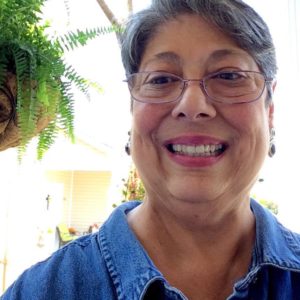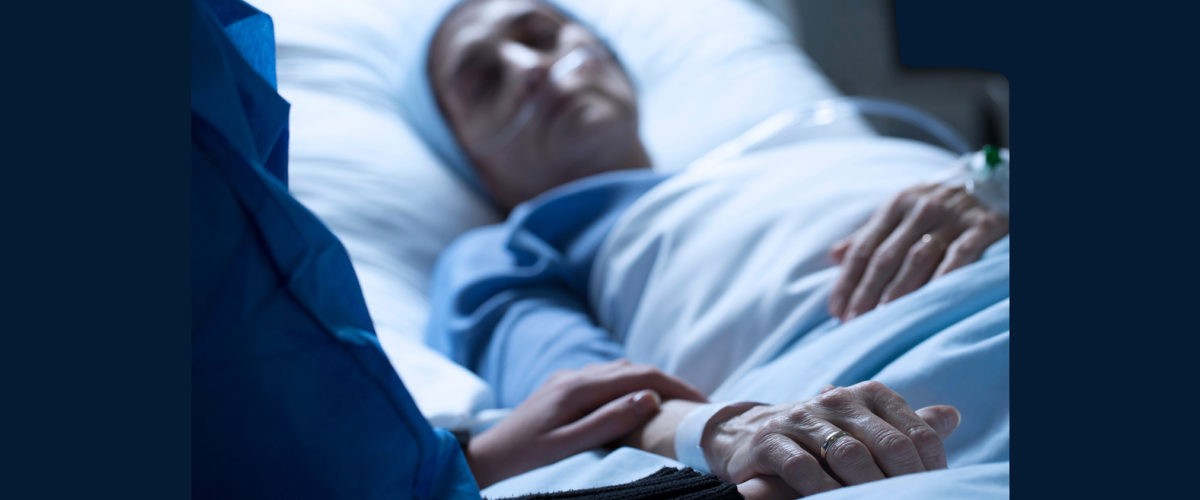It was very late one night when my phone rang, the caller ID telling me this would be a crisis call. As a victim advocate, I had received hundreds of middle-of-the-night crisis calls over the years.
For the sake of anonymity, I will call her Chrissy. In just the few seconds of ring one and two and three, I imagined several possible crisis-reasons for her call. Turns out, none of my imagined crises resembled the crisis she expressed that night.
Chrissy had good reasons for night terrors. Her terror on this night could well have been that she had relived in her dreams the brutal rape she couldn’t forget. It could have been that she was having severe pain from being beaten until she lost consciousness. She still suffered from that pain, especially at night. It could even have been that, heaven forbid, the person who raped her had returned to hurt her again, or worse, to kill her. Her current terror was none of those things. It was something I didn’t expect to hear almost four months after her rape.

Kathy Manis Findley
“Miss Kathy, I know it’s late, but I have to talk to someone. I am so afraid. I don’t know what to do,” she said, her voice trembling. “I’m pregnant, Miss Kathy; what will happen to me?” And then she began to cry, loud and long, with groans that sounded like lament of the soul. We talked for a while, and it was obvious to me that her soul was shattered.
Chrissy’s story
Chrissy had been married for a year to the man who raped and almost killed her. She saw no signs that he could be a violent person, although her parents had sensed it from the beginning of their relationship. In fact, her parents forbade her from marrying him, but she was an 18-year-old with a mind of her own. Unfortunately, her parents disowned her, and she had neither seen nor spoken with them since she married. She was essentially without any support.
Our crisis center, Safe Places, was the only support she had since the rape. She was in counseling with us and attended our weekly support groups. I was called by the hospital the night of the rape to be with her during the ordeal.
I had seen many assaulted women in my advocacy career, but I had never before seen injuries like Chrissy’s. In fact, Chrissy was going to be admitted to the ICU. She had open wounds all over her body from the lamp he used to beat her. All over her face were cuts from the knife he used on several parts of her body. Both eyes were black and swollen shut. Her face was unrecognizable. Her right arm was broken. She was on oxygen because she couldn’t breathe due to broken ribs.
“I had seen many assaulted women in my advocacy career, but I had never before seen injuries like Chrissy’s.”
Chrissy was struggling to speak, yet her words literally poured out as she described what had happened that night. She and her husband had an argument about some insignificant issue she couldn’t even remember. She remembers the squabble from the point when his rage suddenly exploded into intense violence.
Almost out of the blue, he began shouting at her and slapping her. He knocked over the furniture, broke all the glass he could find and grabbed a lamp. He threw the lampshade on the floor and began to beat her with the wooden lamp base. He hit her several times on the head. She remembered dozens of blows, a lot of blood and feeling woozy. And then nothing.
The rest she learned from her neighbor who had heard the noise and gone over to check on her. When the neighbor found her, she was lying unconscious on the floor, bleeding profusely, bruised, swollen and naked. The neighbor could tell that she also had been brutally raped, because her legs were spread widely apart and blood was still flowing.
When the EMTs arrived, she had not regained consciousness; her pulse was dangerously low and her breathing shallow. They rushed her to the hospital. By the time I saw Chrissy in the ER, she had regained consciousness and had managed to tell the nurse and the police what had happened.
“This rape was not at all like most rapes,” the police officer told me. “Her husband beat her unconscious and then raped her. That’s unusual and is an extremely lethal assault. She’ll need security until we find him. This man came very close to killing her!”
So on the night she called, she was desperate because she was alone, had no income and was pregnant.
“I cannot imagine having a baby from him raping me.”
“I can’t have this baby!” she said. “I have no way of taking care of a baby. I cannot imagine having a baby from him raping me.”
I immediately thought she was right. She couldn’t care for a newborn, and because she still had so many injuries, I doubted she could even carry the child to term. The emotional toll of having a child born of rape likely would do her in. I knew I had to help her.
What if Chrissy lived in Texas today?
That was a few years ago, but this is now. In this “now,” I am thinking about the many young girls I have known who found themselves in a situation like Chrissy’s. And I cannot help but think of the current Texas law regarding abortion and the many attacks on Roe v. Wade.
While I am glad I don’t live in Texas, I am acutely aware that my state is not far behind, as are many other states. I cannot fathom the idea that to help someone like Chrissy, I would be breaking the law. Most definitely, it is the marginalized women and young girls who will most suffer because of this Texas law.
If Roe v. Wade eventually is reversed, the persons who would be punished by not being able to terminate their pregnancies would be the girls and young women who absolutely do not have the support they need to give birth, nurture an infant or raise a child.
Roe v. Wade in real time means that women in the same life circumstances as the women and girls I have served over the years would face certain poverty if they had a baby to care for. Chrissy’s lament is Roe v. Wade in real time. Chrissy’s story is the story of women and girls across this nation. Here are some important facts:
- Overturning Roe v. Wade would put more than 25 million women at risk of losing access to abortion — more than a third of women of reproductive age in this country.
- That includes more than 4.3 million Hispanic or Latino women.
- That includes nearly 3.5 million Black or African American women.
- That includes more than 800,000 Asian women.
- That includes nearly 300,000 American Indian or Alaska Native women.
Roe v. Wade in real time is frighteningly real. It is an imminent reality that portends great harm for millions of marginalized women and girls. Women and girls with adequate financial resources always have had access to safe abortions and probably will continue to have that safe access, regardless of the law. However, the young women I have known through my work, like Chrissy, would be forced to seek out medical procedures that are likely dangerously unsafe and possibly lethal.
Why should people of faith care?
What does this have to do with us, people of faith, and how must we respond? Of course, responses are always personal decisions based on each person’s faith, scriptural interpretation and moral/ethical considerations. But at the very foundation of faith, people of faith and congregations rest on a clear calling to compassion, care and love. Decisions to act based on this foundation of faith are seldom simple, and complex decisions create a certain level of anxiety. The truth of this matter is that when helping a woman or young girl access a needed abortion is against the law, the situation requires a complex decision at the very outset.
“Our faith compels us to care for persons most in need, persons who are alone, frightened and marginalized.”
Does helping someone like Chrissy have anything to do with us? It has everything to do with us, because our faith compels us to care for persons most in need, persons who are alone, frightened and marginalized. Faith compels us to care about women and girls whose very lives may be at risk because they must seek alleyway abortions.
Roe v. Wade in real time has nothing to do with our views on abortion. It may well be true that most people are against abortion. Our desire, in fact, is for every pregnant woman and girl to be elated about a new baby, to safely carry her baby to term, to welcome the infant with great joy and to raise a happy, healthy child. If we could fashion a perfect world, this is how their stories would play out.
But ours is not a perfect world. It is a world where violence against women is common, young girls are sexually abused and teenage girls are raped. I can’t help but believe that God’s calling to us, as God’s people and as congregations, includes a call to compassion for all people — a call to offer help and hope as Christ did. The psalmist in Psalm 147 describes the compassionate nature of God, “God heals the brokenhearted, and binds up their wounds.”
A call to compassion
Out of compassion, God calls God’s people to compassion, and a call to compassion means many things — holding the brokenhearted ones in our hearts, being present in their suffering, tending to their physical and emotional wounds, keeping vigil with them through impossible times, defending their rights, speaking for them when principalities and powers oppress.
In plain English, compassion for women struggling with abortion means both compassionate presence and the kind of advocacy that informs your congressional representatives about what abortion restrictions and laws mean in real life, in real time. It’s not just about politics or rigid moral codes of living. It’s about medical access for both the wealthy and the poor. Even the Book of Proverbs has words for that.
Speak up for those who cannot speak for themselves;
defend the rights of all those who have nothing.
Speak up and judge fairly,
and defend the rights of the poor and needy.
— Proverbs 31:8-9 (NCV)
When pregnant women and girls — marginalized, afraid, alone and desperate — need a safe path forward, it’s all about Roe v. Wade in real time. Most of all, it is about my compassionate care and advocacy and yours.
Kathy Manis Findley is an ordained Baptist minister with Greek Orthodox roots. Now retired in Macon, Ga., she spent her 38-year ministry serving as a pastor, hospital chaplain, trauma counselor and missionary to Uganda. She is a graduate of Southern Baptist Theological Seminary and is certified in victimology, trauma intervention and child forensic interviewing. She is the author of two serious books, Voices of our Sisters and The Survivor’s Voice: Healing the Invisible Wounds of Violence and Abuse, and just for fun, one Kindle novel.
Related articles:
Talking about abortion is an opportunity to call on the grace of Jesus Christ | Opinion by Erin Jean Warde
SBC calls for ‘immediate abolition of abortion without exception or compromise’
When being ‘pro-life’ really isn’t: How I became a Democrat who opposes abortion | Analysis by Chris Conley
When your religion goes against my religion | Opinion by David Bumgardner


